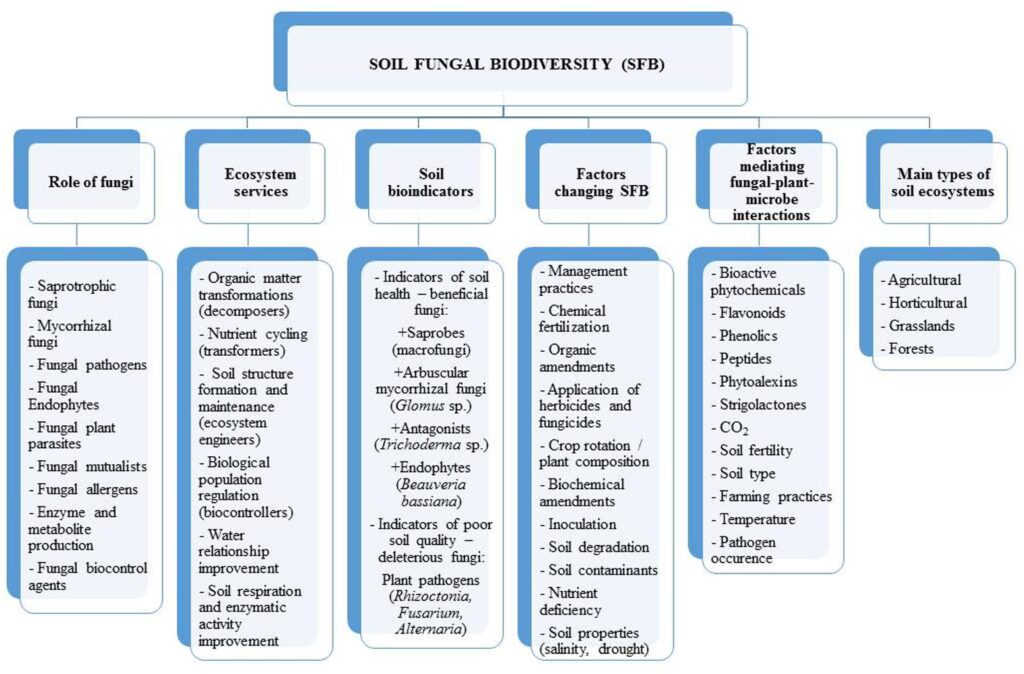
Arbuscular mycorrhizal fungi (AMF) are the most important class of beneficial micro-organisms in agricultural and horticultural soils. Numerous experiments have shown significant increases in crop plant yields following AMF inoculation.
Key effects of AMF symbiosis include: improved rooting and establishment of plants, stimulation of nutrient cycling, improved soil structure, improved plant tolerance to stress, increased uptake of low mobility ions and improved plant community diversity. Crop plant diseases can be controlled by some antagonistic fungi such as Glomus sp. or Trichoderma sp. by suppressing fungal pathogens. Trichoderma species (T. asperellum, T. atroviride, T. harzianum, T. virens and T. viride) are frequently used in biocontrol and are known as biostimulants of horticultural crops.
Other positive effects of fungi on soil quality and plant health include inoculation by microbial consortia of AMF together with plant growth-promoting rhizobacteria (PGPR) and others such as N-fixing and P-solubilising microorganisms. A synergistic and favourable impact of AMF and PGPR on horticultural plant growth and soil microbial diversity and activity has been reported.
In addition to beneficial fungi, agricultural and horticultural ecosystems also contain plant pathogens. The main groups of soil-borne root pathogenic fungi and oomycetes are the genera Fusarium, Verticillium, Rhizoctonia, Pythium, Phytophthora and many others, of global and local importance. Soil fungal diversity and methods to increase it, in particular populations of beneficial fungi within ecosystems, should be used in practice for more sustainable plant production, reduction of chemical applications and protection of the soil environment.
https://www.frontiersin.org/articles/10.3389/fmicb.2018.00707/full


